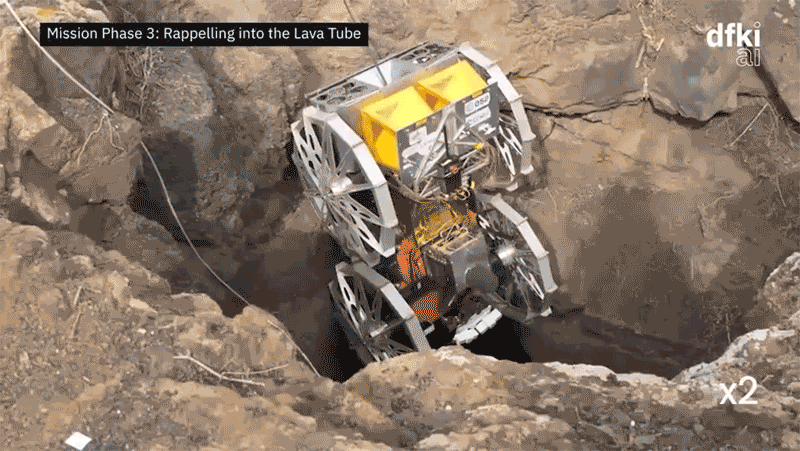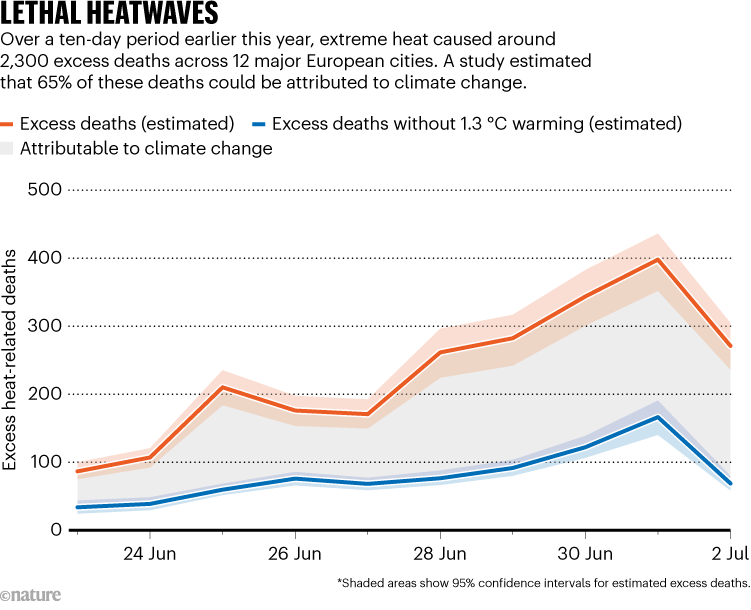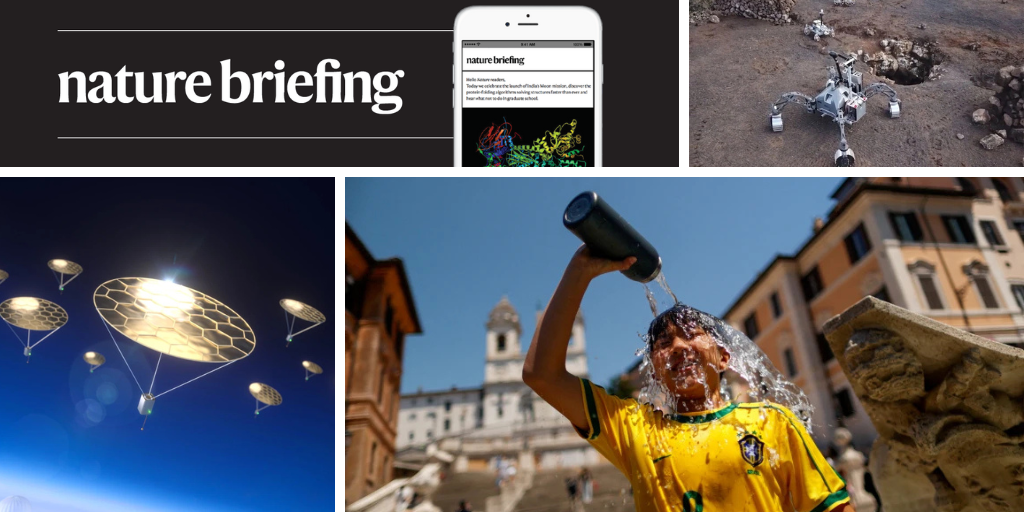You have full access to this article via your institution.
Hello Nature readers, would you like to get this Briefing in your inbox free every day? Sign up here.

The smaller rover stays attached to the larger one as it rappels down into the lava tube. Credit: Carlos Pérez-del-Pulgar
Researchers have developed a team of robots that can autonomously explore underground tunnels. First, one drops a probe into the hole to map the interior. Then the smaller of a pair of rovers attaches itself to the larger and abseils down into the cave. From there it can detach itself and explore the environment it finds. The rappelling robots are “a significant step toward enabling future lunar or Martian cave missions”, says geochemist Jennifer Blank.
Reference: Science Robotics paper
A surprising number of birds are ‘sex reversed’, in which their appearance and reproductive organs don’t align with the genetic sex determined by chromosomes. In a study of nearly 500 birds belonging to five common species that were brought into an animal hospital in Australia, researchers found that up to 6% of individuals were sex-reversed. Most examples were genetically female birds with male reproductive organs, but the group included a genetically male bird who appeared to have recently laid an egg.
Reference: Biology Letters paper
A device takes advantage of the properties of two layers of material to levitate using only the power of sunlight. The top layer is transparent, allowing sunlight to shine through it, and the bottom layer absorbs that sunlight. Gas molecules moving from the cold transparent layer to the hot bottom layer creates a lift that is similar to that created by a helicopter’s whirring rotor, says engineer Igor Bargatin, who has pioneered work on similar devices.
From mid-June to early July, Western Europe experienced its highest average temperatures for this period in decades, and the hottest June on record. And, between 10 June and 8 August, more than 98,000 people in Europe have been displaced by wildfire. Research suggests that heatwaves in the region are becoming much more frequent — one estimate found that London can now expect events like this every 6 years instead of every 60. That’s bad for lives and livelihoods: extreme heat cut Greece’s gross domestic product by 1.1% between 1 May and 14 July 2025, for example.

Source: Grantham Institute report Climate change tripled heat-related deaths in early summer European heatwave
Features & opinion
Despite years of trying to create a quantum theory of gravity, researchers haven’t generated any concrete evidence to support any one contender. Now experiments are in the works that could finally test the true nature of gravity in the laboratory. Some tests plan to use advanced lasers still being invented. Others require ambitious techniques to manipulate matter that might never be achievable. Still, after years of stagnation, some physicists are welcoming “a new era in quantum-gravity research”, says theorist Jonathan Oppenheim.
The only way to iron out uncertainties in climate change modelling is to fund basic climate research, argues climate scientist Tim Palmer. Doing so will give us a better understanding of complex climate systems and a clearer picture of what lies ahead. “Whether the future is closer to an inconvenience or an existential catastrophe, one thing is clear: don’t cut funding for basic climate research,” Palmer writes.
Harsh lighting, shiny surfaces and cluttered spaces are among the challenges for scientists wanting to photograph their experiments, whether for public engagement, teaching, or so that a setup can be repeated by others. Alongside a plethora of tips — mostly aimed at physicists — photographer and researcher David Penny notes that the benefits of slowing down to take a few shots go beyond the images captured. “It can also become a framework for observing more attentively, thinking more critically about visual evidence and engaging more creatively with the process of research communication,” he writes.
Nature Reviews Physics | 10 min read
Today I’m reminded that good things don’t only come to those who wait. A case in point: archaeology student Yara Souza recently uncovered a ninth-century artefact just 90 minutes into her first ever excavation. The tiny decorated object was found near the route of a Roman road that ran between York and Edinburgh.
If you see an opportunity for a quick win that’ll improve this newsletter, please let us know at [email protected].
Thanks for reading,
Jacob Smith, associate editor, Nature Briefing
With contributions by Flora Graham
• Nature Briefing: Careers — insights, advice and award-winning journalism to help you optimize your working life
• Nature Briefing: Microbiology — the most abundant living entities on our planet — microorganisms — and the role they play in health, the environment and food systems
• Nature Briefing: Anthropocene — climate change, biodiversity, sustainability and geoengineering
• Nature Briefing: AI & Robotics — 100% written by humans, of course
• Nature Briefing: Cancer — a weekly newsletter written with cancer researchers in mind
• Nature Briefing: Translational Research — covers biotechnology, drug discovery and pharma


